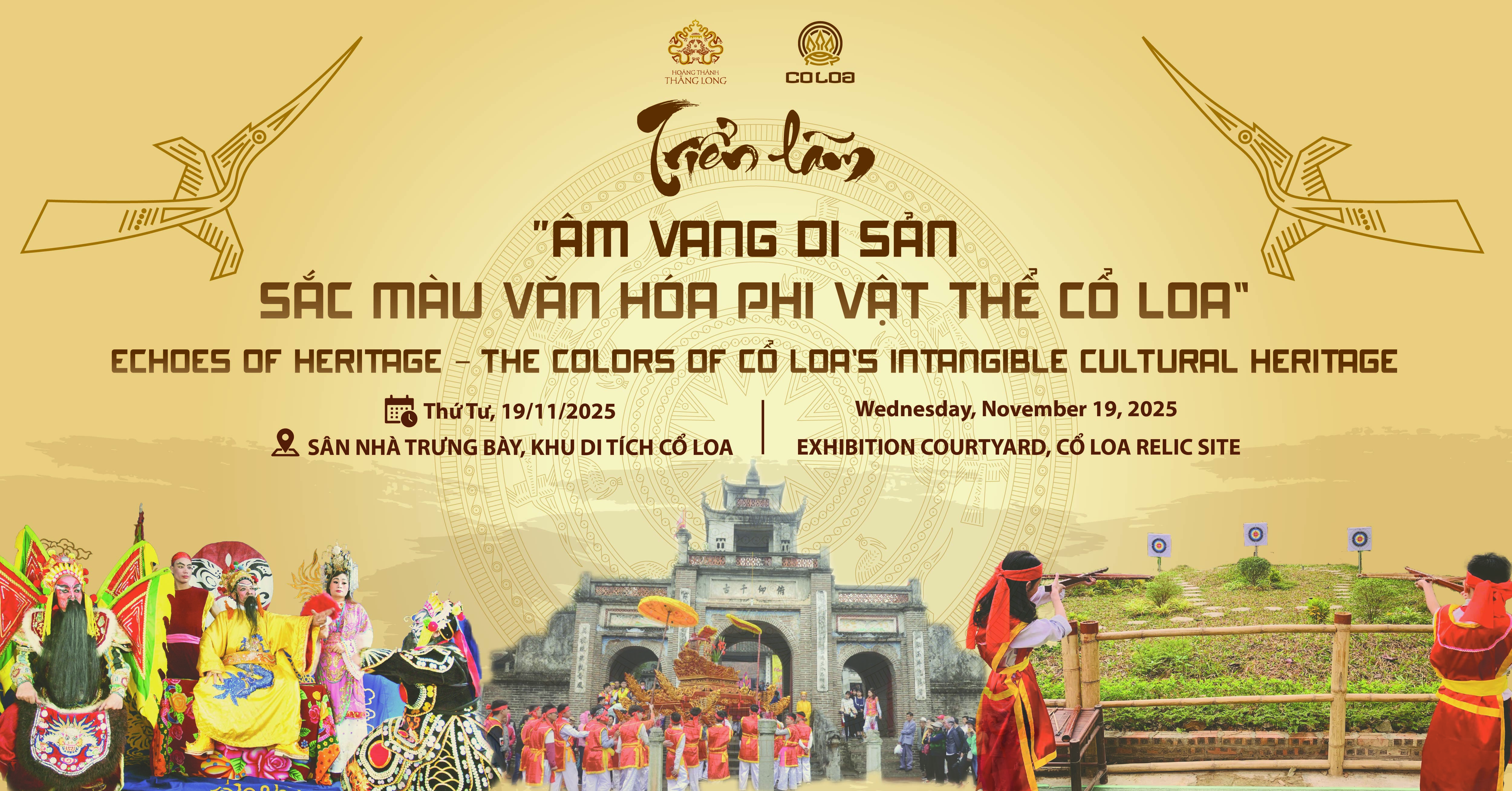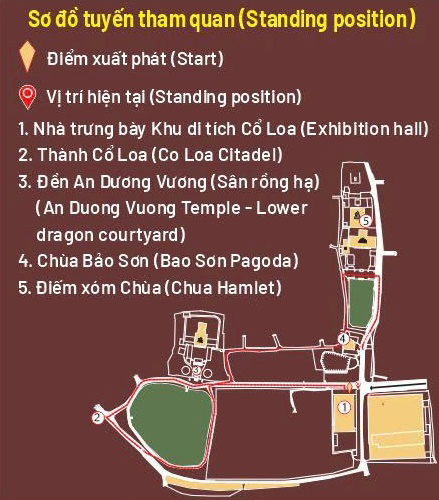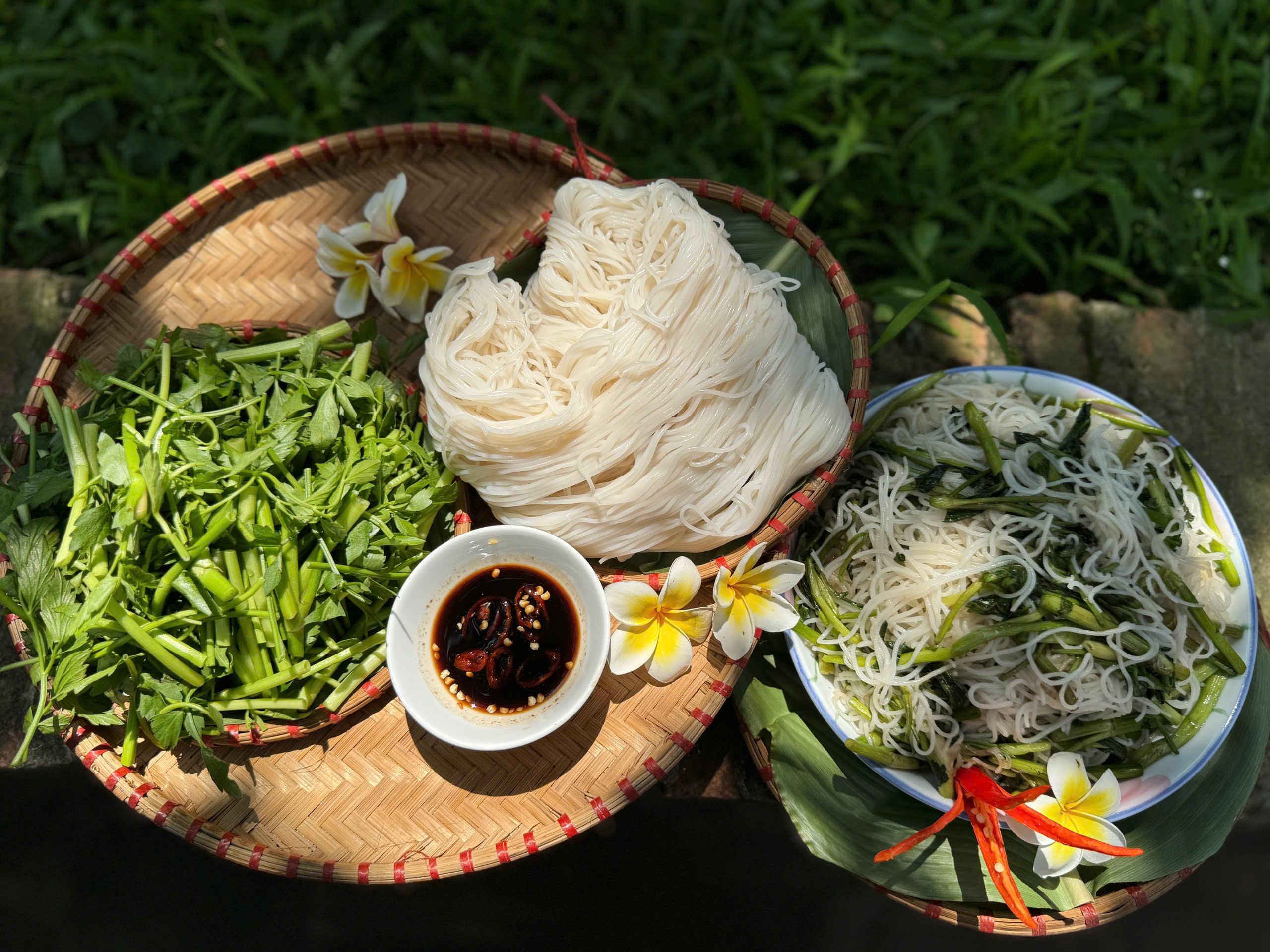
Co Loa mould collection which is a collection of two-piece and mainly three-piece moulds, was made of stone (sandstone), discovered through excavations at Thuong temple, in Co Loa special national relic site between 2004 and 2007. This is the place where An Duong Vuong’s temple stands (the king who founded the Au Lac state), where according to folk legends was the palace of king. At the time, Co Loa was the capital - the political, economic and cultural center of the country. However, the discovery of moulds in Thuong Temple together with a system of traces of bronze-casting furnaces at the same time gave us a different perception of this important historical place in the dense system of relics in Co Loa. There are 11 pieces of lithic moulds, of which 10 pieces of three-pointed arrow moulds and one piece of a swallow-shaped javelin mould, made from a soft, fine-grained stone (sandstone), which is suitable material for mould making. The stone which is gray, with the exception of light purple, the shape is based on natural stones, with a cross-section is a nearly square or a nearly rectangular, made into two or three pieces (two and three piece moulds. The outer surface of each piece is formed into a predetermined shape through sketchy chips. The inner side is much more carefully crafted, with techniques of engraving, chiseling, grinding, adjusting so that when two or three pieces are assembled to create a perfect fit, with an angle at the two ends of the mould approximately 1200. On the contours (three-piece moulds), flat surfaces (two-piece moulds), the craftsman uses carving, chiseling, and grinding techniques to create castings, specifically in this set of molds, arrows with three-sided heads, or javelins has a wing-shaped head. On the top of some molds, the arrowhead has a very small burr to serve as the pouring point, below the arrowhead, there is a short, narrowing burr, to connect with the shank, extending along the mold piece. Among the mold pieces discovered in Thuong temple, there are mold pieces that still have the embossed ridge where the arrow handle (positive side), there are pieces, the name handle is a concave groove (negative side), according to which, the product made has a round handle or trough-shaped handle respectively.
Based on this technical trace, it is possible to divide 10 three-pieces arrow molds in Thuong temple into two types:
- The first type: 8 piece moulds, with a concave ridge line, whereby the casting will be left on the shank as a circular cross-section. Of these, there are two pieces inscribed Chinese characters, one of it’s outer face is smoothly polished, and the edges have engraved characters. Because the mould is not intact, only two characters remain, one of which is clearly "God" (臣) (quan). The rest of the letters are of unknown meaning, with the outside surface being polished and the word "Human" (人) written on it.
- Second type: 2 piece moulds, creating embossed line, whereby the casting is left on the trough-shaped shank.
In addition to the above two types of 3 piece molds in Thuong temple, and 2 piece mold type. It is a swallow-shaped javelin, this piece mould has a flattened rectangular block, a D-shaped cross section. The two ends of the mold and the two sides, where the mold assembly are smoothed. The outside of mold is curved, which is relatively flat. On the face of the mold, it is shown that the casting is a swallow-shaped javelin, with a rounded throat, narrowing at the top, gradually growing down. The lower end of mold, where it meets the throat, is a round hole. The two sides of the javelin have shallow lines, extending to the edge of the mold, creating air vents. At the top of mold, the tip of javelin is arranged with a pouring point. It's a half-circle set to one side. Also at this end, there are lines marking the assembly of the mold (1 line on the side, 3 lines on the side). The color of stone which used to make the javelin mold, is different from that of the arrow mold, light purple.
Thus, based on the mold pieces and fragments discovered in Thuong Temple, it is possible to imagine that there are two types of molds here: Three-piece and two-piece. The stone castings are located in a stable stratigraphy with many associated relics and artifacts from the same era, dating from the Dong Son culture – early Iron Age, about 2300 to 2200 years ago. That is the period identified by archaeologists as the Co Loa period - the period when King An Duong Vuong established the capital in Co Loa citadel and the Au Lac state in the process of national history.
This collection includes original, unique, representative, and valuable artifacts related to major national events. As a typical invented product, with high practical value, it has the effect of promoting the development of society at a certain historical period.
Since its discovery, the collection has become the third archaeological phenomenon in Co Loa, after the Cau Vuc bronze arrow warehouse and the Ma Tre bronze drum and plow. All three famous archaeological phenomena are related to each other, reflecting two outstanding achievements of the Au Lac state, namely metallurgy, bronze casting and wet rice farming of the ancient Vietnamese.
The mold collection in Thuong temple has appeared in many archaeological research works and now, they are being displayed at the Co Loa relic gallery as one of the material evidences of the historical era of An Duong Vuong, Au Lac state, Co Loa capital.

Mould piece for casting three-barbed bronze arrows

Mould piece for casting swallow wing-shaped javelins
MANAGEMENT DEPARTMENT OF COLOA VESTIGE SITE








